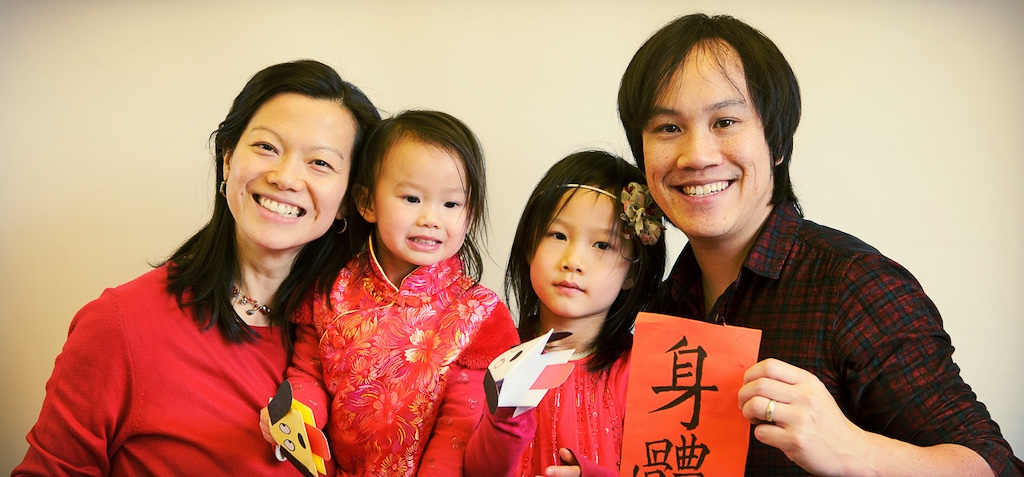
Friday February 26 was the fifteenth day of Chinese New Year, 元宵節, which marks the first full moon of the Lunar New Year.
This is a significant celebration for many people across the world and is even more widely celebrated than Christmas and Easter!
A major component of Lunar New Year festivities is food. This year, my family and I made dumplings in the shape of golden ingots to signify prosperity, which is a hope we have for local businesses around us. Uncut noodles represent long life and sharing a whole chicken symbolises families coming together. These are all hopes and wishes we have for our local community. Even the amount of food is symbolic, representing abundance and banqueting.
Banqueting is frequently depicted in early Christian art. The imagery of sharing a meal is central to our understanding and celebration of the Eucharist too. The Bible is rich in banqueting imagery. The Gospel writer, Matthew, repeatedly describes banquets and feasts as being present in the kingdom of heaven. He records two instances in Jesus’ life where he miraculously multiplies loaves and fishes. The first occurrence takes places in chapter 14 with the feeding of the 5,000. The second occurrence is in chapter 15 where he feeds 4,000.
Two questions I have always pondered are – why did Jesus perform the same miracle twice, and why did the gospel writer record both instances when they are so similar? It seems to me that there could be three distinct possibilities.
Firstly, it could be that they are the same story told twice. If you look at the evidence, however, this is very unlikely. For a start, when Jesus fed the 5,000 in chapter 14, we read that the grass was green and that it was early spring. There is no indication that this is the case in chapter 15. In fact, if we look at the corresponding account in the Gospel of Mark, we read that they sat on hard ground. And although the miracles are similar, Matthew has emphasised differences in the number of fish and the number of the crowd to clearly distinguish the two from one another. So, they are not the same story.
The second possibility then, is that Matthew is simply reiterating the point of the first miracle. When Jesus fed the 5,000 in chapter 14, he was symbolically demonstrating that he has come to feed God’s chosen people. Is that the same point he is trying to make in chapter 15? I would argue no, and the reason for that assertion leads me to our third and most likely possibility.
A significant difference between the feeding of the 4,000 and the feeding of the 5,000 is that whilst the 5,000 were predominantly Jewish, the crowd further along the shore were gentiles; that is to say, not Jewish. This explains why the disciples in chapter 15 ask Jesus how he plans to feed this crowd. They have not suddenly had a relapse in memory and forgotten that Jesus had already miraculously fed the 5,000. They ask the question, because they cannot imagine that the heavenly banqueting table – which represents the kingdom – is open to all people, regardless of ethnicity or background.
And yet this is the good news of the gospel. Jesus does not want to send anyone away hungry. In the feeding of the 4,000, Jesus takes the initiative to feedthem. We read that it is Jesus who calls the disciples to himself and tells them “I have compassion for these people” (v.32). We also read that some in the crowd were lame, blind, crippled and mute (v.30). Jesus demonstrates that God’s love is inclusive – it is for Jews and gentiles alike. It is for the able-bodied and non. It cuts across class and status. The banqueting table is a place where all people can receive a welcome and feast together in the love of God.
Lunar New Year is traditionally a time when Chinese families like mine gather together at our parent’s home – what could also be described as our “father’s” house. This comes after a ritual spring-clean, which amongst other things, represents putting aside disagreements and resentment. The banqueting table is also a place where we serve one another. You’ll often observe family members picking up the choicest morsels of food in their chopsticks and placing them in another’s rice bowl to enjoy. It is a time where everyone participates, and no one is left out.
As we begin to ease out of lockdown, let us be reminded of God’s radical hospitality. May the imagery of the banqueting table – both in Chinese tradition and the Bible – remind us to extend a welcome to all people and to be sensitive to the needs of all those who are found on the margins of our society.
Blessings,
Revd Mark Nam 甄英深